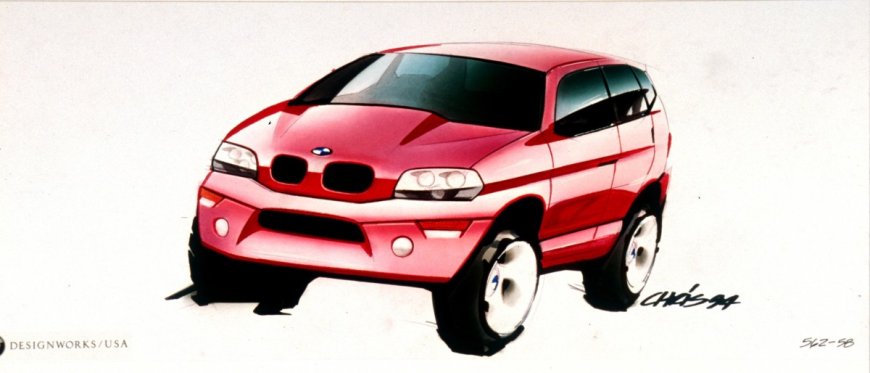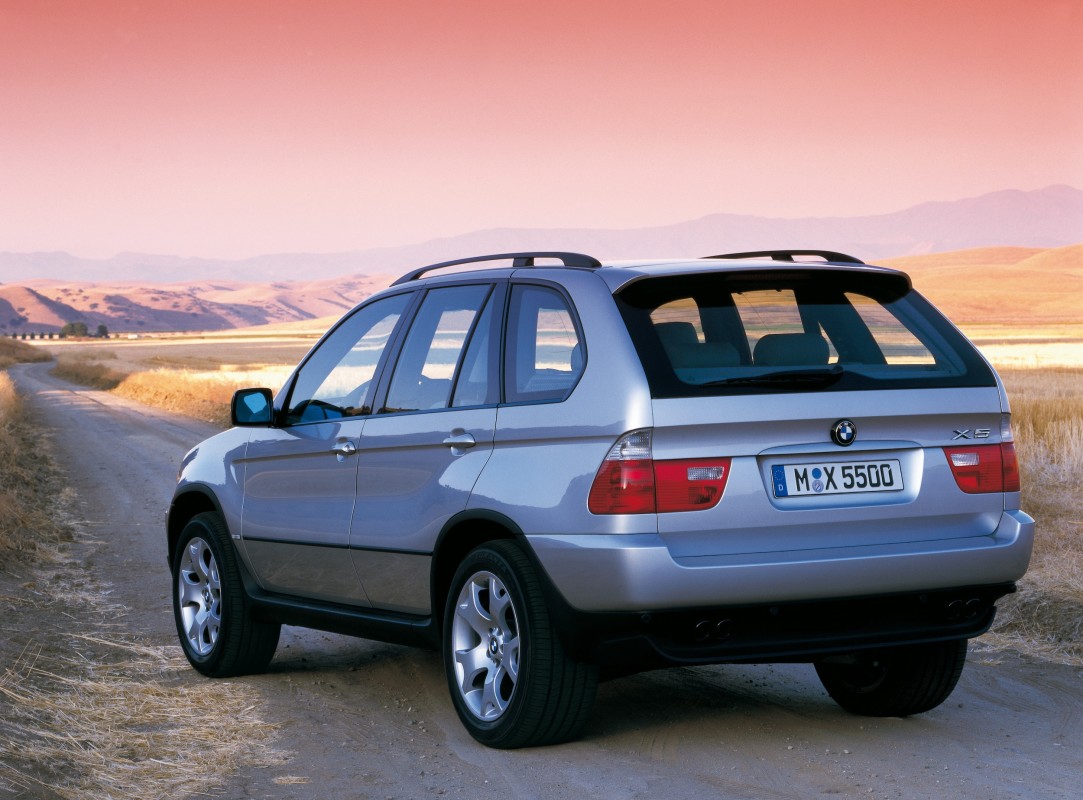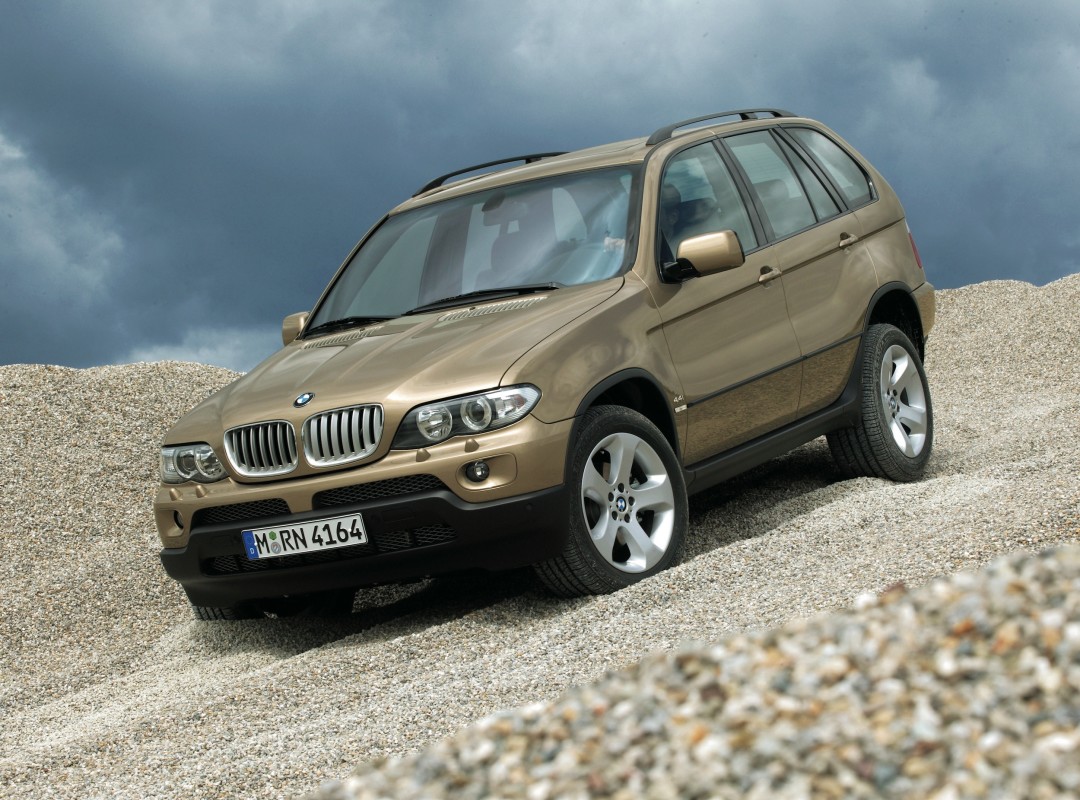Four things you didn’t know about the BMW X5
The BMW X5 had to undergo a complicated development journey to become the icon it is today.

The BMW X5 is celebrating its silver anniversary, and its presence is no longer the anomaly it seemed to be upon its arrival. The BMW X5 successfully held the middle ground between traditional SUVs like the Range Rover and Jeep Grand Cherokee, and MPVs while remaining true to the brand’s mantra of being the ultimate driving machine.
But while the idea of a BMW SUV seemed so unlikely at the time, the result was thoroughly convincing. Now that the model has become BMW’s bestseller, it has become an accepted part of the automotive firmament. Here’s a look at four stories behind the BMW X5’s creation from the people involved with developing it.
Related: CES 2025: Take a look at BMW's new Panoramic iDrive display for the Neue Klasse EV
The BMW X5 pioneered a different look for SUVs
Many of today’s SUVs have a different look from those that came before. It’s one the BMW X5 pioneered.
“Looking at the final production BMW X5 what I want you to notice is it's as if we had to create kind of a weird under-closure to hide all these mechanicals down there. Notice the rear bumper is actually two, there's a there's an upper bumper and a lower bumper,” said Chris Bangle, former Chief of Design at BMW Group. BMW
“And to me, the fascinating thing about today's crop of SUVs is they are exactly two cars stacked on one another. If you go somewhere around the middle of the wheels on up or a little bit higher, they seem like a reasonable car, but then there's another whole car underneath them, and that way of sandwiching the vehicle is what we had to do with the original X5 to get around the fact that engineers had dropped the running gear down so low.”
The BMW X5’s design came from a former Isuzu designer
Chris Chapman was hired by BMW after being laid off from Isuzu, where he learned that one of the key styling elements of SUV styling is a strong C-Pillar. Chapman’s first assignment upon joining BMW was to sketch proposals for BMW’s first SUV, which included a strong, body-colored C-Pillar.
“Chris was a strong proponent of that look for an SUV,” Bangle said. “Frank Stephenson was also involved in the project. He basically did an upper, which was more traditional, like a station wagon." Hyundai
Nevertheless, the final design had to look like it was a natural part of the BMW lineup.
“Chris Bangle and I, we were privately talking about the soul sister, or the spirit animal that people could relate to within BMW to an SUV,” Chapman said. “It was coming actually more from their motorcycles and the GS bike, the adventure bike, which was like on-road, off-road.”
“Chapman developed this thing in Italy, and Frank Stevenson had an involvement with it at the beginning, but it's really Chapman's car,” Bangle said.
Related: Your chance to buy a race-winning 1960 Alfa Romeo Giulietta Sprint Zagato is now
Chris Chapman ultimately guided its design
The full-size models were developed in resin by Italy’s G Studio under Pier Angelo Maffiodo, who ran the studio.
“G Studio at the time was chock full of Bertone modelers,” Bangle said. “These guys have been everywhere. They've seen everything, right? And they know how to take the shit out of a designer.”
But Chapman and Stephenson’s opinion on the X5's final look differed. BMW
“Anything he ever did on the car, whenever I went to Germany, I had to fix it, to be honest with you,” Chapman said. “I remember I went back to Italy for a second time to work on the car.”
What he encountered was a very upset modeler.
“When I got there, he looked at me. He goes, ‘What the hell’ in Italian; what the hell happened? He said it was ‘tutu patata’; ‘it's a total potato now’. It's got all of this fat and everything like that. And so we together, went through a phase of just cleaning up lines, crisping up things or whatever, and trying to take the fat out of the thing. He was, like, what did you do to my car? I said, ‘It wasn't me.’ And I told him. I said, ‘It was Frank; Frank Stephenson did this.’ So we had to clean it up and correct it twice.”
“Frank is a Remora fish,” Chapman continues. “He's basically built his career not by standing on the shoulders of giants but by surviving off the scraps of these people.”
Related: BMW finally ditches its most useless feature BMW
BMW designers created a new unit of measure
For the BMW X5, Chapman and his fellow designers wanted a short rear overhang.
“The whole difference between this and a station wagon is the thing is tight; the wheels are out on the corners, tight,” Bangle said. “So the rear overhang had real length issues on it, and I kept forcing this package to be as short as possible, pushing back against the engineers with their luggage space getting larger and seats getting fatter, and tailgate door getting thicker.”
“I talked to (Michael) Ninic, who was responsible for the interiors, and I said, ‘That's it. That's the line where the rear of this car stops. So this is the point where the interior space ends, and Jesus Christ himself could move that line!” So from that point on, Mike would give me the data on the car in terms of “Jesus units.” He would say, “we are now at Jesus plus seven.”
Final thoughts
Twenty-five years later, the BMW X5 is the heart of BMW’s SUV lineup, one that’s as iconic in its own way as the 3 Series. If anything, the X5’s development is a lesson in successfully expanding a legendary marque’s offerings to places it had never been before.
Related: Burning Teslas in LA add toxic barriers to wildfire cleanup











































